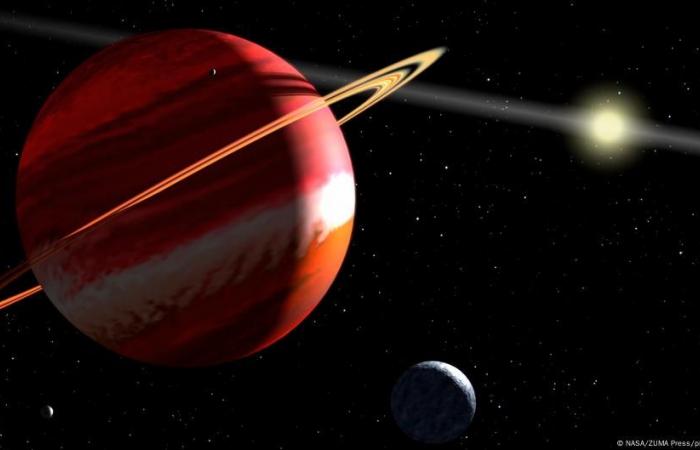In 1995, Swiss scientists Michel Mayor and Didier Queloz confirmed for the first time the presence of a planet on another system other than the plot, a discovered finding since Friday by the University of Geneva in which they both worked, and that allowed astronomy to open to the search for exoplanets capable of hosting life, like the earth.
The prestigious research center, whose Astronomy Department was part of the two experts in 1995, has opened an exhibition in the center of Geneva, on the shores of Lake Leman, to commemorate the ephemeris, and organize several conferences for the same purpose, one of them with the participation of greater, already retired.
On October 6, 1995, being the professor and chef doctoral student under his supervision, both announced the detection of a planet that called 51 Pegasi B, subsequently also known as Dimidium, an achievement that almost a quarter of a century later, in 2019, would be awarded with the Nobel Prize for Physics for both.
The suspicion lasted a year
The discovery of the star almost 51 light years, of a size similar to that of Jupiter although much closer to its star than this one, was achieved through the radial speed system, which measures through the slight oscillations of a star caused by the proximity of a planet.
Queloz and Mayor used the data obtained by the Elodie spectrograph in the High Provence Observatory (southeast of France), where in 1994 they began to suspect that an object orbiting every 4.2 days around the 51 Pegasi star, although they took a year to be sure that it was a planet.
Small and “cold” exoplanets
That discovery opened the door to a new branch of astronomy, exoplanetology, in which more than 5,000 planets have already been discovered, surely a tiny fraction of the total, if one takes into account that only our galaxy, the Milky Way, has hundreds of billions of stars.
At first, only the largest exoplanets could be observed and close to their stars, but especially in the last 10 years the search has been refined to bodies whose smaller size or its greatest remoteness of its “soles” can allow life with more probability, with rocky planets instead of soda, more stable atmospheres and adequate temperatures.
It is already being able to analyze the atmospheres of some of those exoplanets, something key to find possible signs of life, in Astros the size of Neptune, explained that in a recent interview for the national television Switzerland RTS.
The Cheops satellite or the Espresso spectrograph, conceived in Geneva and installed by the Southern European Observatory (ESO) in the Chilean Desert Telescopes System of Atacama, lead the current search with new systems such as the so -called Transit Method, which detects small periodic falls in the light of a star when a planet passes in front of it.
At last another planet alive?
The news of new candidate exoplanets to be “lands B” follow each other more and more frequency, and finally last April the discovery was announced through the James Webb telescope of “indications of biological activity” on one of those planets, located 124 light years of ours.
Researchers who work with James Webb data have identified molecules such as dimethylsulfuro, which are associated with biological processes, although this detection has not reached the statistical threshold necessary to confirm the presence of life.
The discovery of the exoplanet, called K2-18B, with a mass eight times higher than the land and that according to its researchers could be covered with water, has been recognized as an advance, although astronomers such as the Queloz himself warned of the need to take it prudence.
“Detecting life through the atmosphere of a planet is extremely complicated, first you have to understand the functioning of the star, then its atmosphere and finally see how life arises,” he explained in his recent interview for RTS.
The (EFE)






